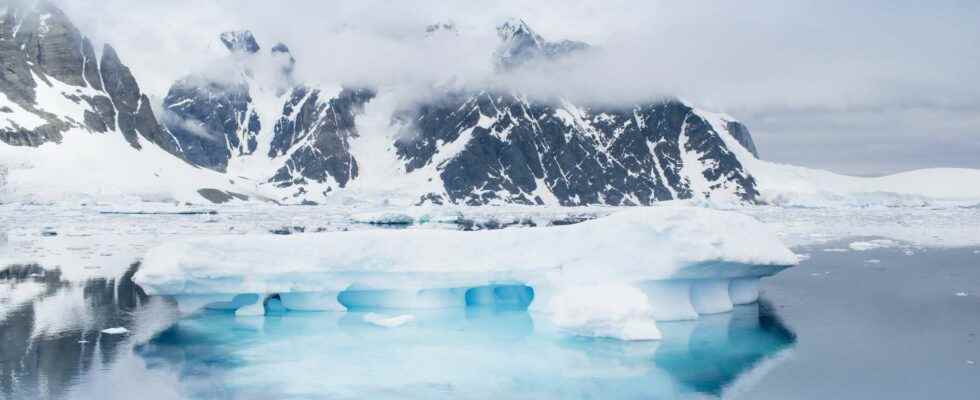You will also be interested
[EN VIDÉO] How does magma form before a volcanic eruption? Magma is the origin of the formation of volcanoes. This molten rock, which bubbles up in the crater, comes from a partial melting of the Earth’s mantle. Futura met Jacques-Marie Bardintzeff, doctor in volcanology, who tells the origin of magma.
Since August 2020, Antarctica has been shaken by intense seismic activity. Some 85,000 earthquakes earth have indeed been recorded in the Bransfield Strait, a narrow passage located between the South Shetland Islands and the peninsula Antarctic. This seismic swarm is the largest ever recorded in the region. It could be linked to the awakening of a major underwater volcano.
The Bransfield Strait off Antarctica is not a tectonically harmless area. It is a pool of rift where we are currently observing the birth of a new ocean. But this region has some peculiarities, which make this narrow ocean basin a unique tectonic case in the world.
An extensive basin behind an ancient subduction zone
The South Shetland Islands and the Antarctic Peninsula indeed correspond to a segment of a former great subduction zone, active during the last 200 million years. The plate of phoenix then plunged under the Shetland Plate, at the level of the Antarctic Peninsula, leading to the formation of a volcanic arc : the current South Shetland Islands. In parallel with this subduction a back-arc basin develops, which is an extending zone located behind the subduction pit. It is not uncommon to observe the development of a rift, even the opening of a new ocean, behind a subduction zone, which is, by definition, a convergent plate boundary. This tectonic situation, which may seem counter-intuitive, is explained by the dynamics of subduction. The dehydration of the plunging plate (the slab) causes the merger of coat overlying, of which the magma will give rise to the volcanoes of the magmatic arc. This anomaly thermal will create a cell of convection in the asthenosphere, which can induce a thinning of the lithosphere and the creation of an active rift zone. In the case of the subduction of the Phoenix Plate, the basin has the particularity of having developed right in the middle of the volcanic arc, to form the current Bransfield Strait.
4 million years ago, however, the subduction of the Phoenix plate came to an abrupt halt. However, the extension in the Bransfield Strait continues, at the speed of the order of 1 to 2 cm/year. This extension, which continues to thin the crustwould now be associated with the removal of the deep slab or a movement shear between the Scotia and Antarctic plates. The area is thus marked by an anomaly in the flow of heat and by the development of new volcanoes.
Unusual seismic activity linked to the awakening of an underwater volcano
It is not surprising, in this kind of context, that scientists observe seismic activity. This activity is thus located mainly at the level of the residual subduction zone in the form of compressive events, as well as at the level of the strait, in connection with extensive or shearing movements along flaws. These seismic events are however of moderate power.
In view of this regional seismicity, the swarm of earthquakes recorded since 2020 has the particularity of being much more powerful, with in particular a peak of activity in October and November 2020, where two earthquakes of magnitude 5.9 and 6 were recorded.
The seismic swarm was also located near the underwater volcano Orca. This volcano, which rises 900 meters above the ocean floor of the Bransfield Strait, was previously considered inactive. For the scientists who analyzed the data, this unusual activity for the region could be significant of an awakening of the volcano.
Their results, published in Nature Communications Earth and Environmentsuggest that this earthquake swarm would be linked to an intrusion of 0.26 to 0.56 km3 of magma under the volcano. For scientists, it is likely that an underwater eruption is underway, although it has not yet been confirmed by surface water temperature anomalies.
Interested in what you just read?
